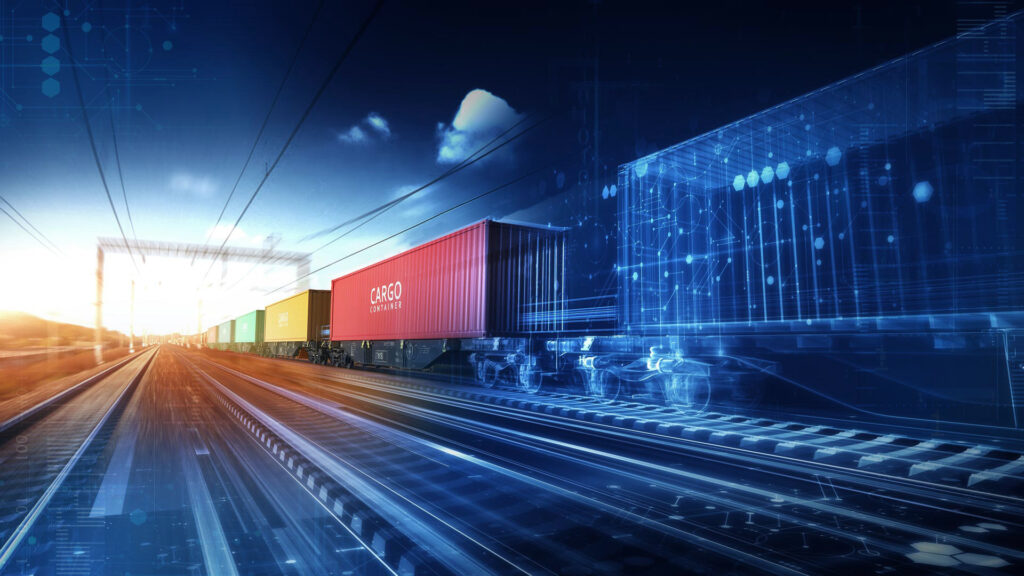- By TOP CHINA FREIGHT
- September 18, 2025
- Rail Freight, Shipping
Table of Contents
Freight train China to Europe has become a vital alternative to sea and air transport in global trade. Importers and exporters now rely on rail freight for faster transit times than sea and lower costs compared to air. However, understanding pricing, transit routes, customs, and scheduling is crucial to ensure smooth delivery. This guide explains everything you need to know, including cost-saving strategies and practical tips.

What makes freight train China to Europe popular?
Rail freight between China and Europe has grown rapidly due to several benefits:
Shorter transit time:
14–20 days compared to 30–45 days by sea.
Lower costs:
Cheaper than air freight by up to 70%.
Reliable schedules:
Trains depart multiple times weekly from key Chinese cities.
Environmental benefits:
Rail freight produces less CO₂ compared to air and sea.
For businesses that want speed without paying for air freight, China-Europe rail shipping offers a balanced solution.
How does rail freight compare with sea and air?
| Method | Transit Time | Cost | Best For | Pros | Cons |
|---|---|---|---|---|---|
| Rail Freight | 14–20 days | Medium | Electronics, fashion, machinery | Faster than sea, cheaper than air | Limited routes, border customs |
| Sea Freight | 30–45 days | Low | Bulk cargo, heavy goods | Lowest cost, large capacity | Long transit time |
| Air Freight | 5–10 days | High | Urgent, small shipments | Fastest option | Expensive, weight limits |
Rail freight bridges the gap between sea and air, making it an attractive middle-ground option.
What are the main rail routes from China to Europe?
Freight trains operate through multiple corridors connecting Chinese cities with European hubs:
| China Origin | Europe Destination | Average Transit Time |
|---|---|---|
| Chongqing | Duisburg (Germany) | 15–18 days |
| Xi’an | Warsaw (Poland) | 14–16 days |
| Yiwu | Madrid (Spain) | 18–21 days |
| Chengdu | Milan (Italy) | 16–20 days |
| Wuhan | Hamburg (Germany) | 16–18 days |
These routes pass through countries like Kazakhstan, Russia, Belarus, and Poland before reaching final European destinations.
What factors influence rail freight costs?
Hazardous or oversized goods cost more.
Prices are calculated per cubic meter or per ton.
Direct routes are cheaper than multi-country detours.
Costs rise before Chinese New Year and European holidays.
Border controls may add inspection costs.
Fluctuations in rail operation costs affect rates.
What types of cargo are suitable for rail freight?
Rail is especially useful for mid-volume, time-sensitive cargo. Common categories include:
- Electronics and IT equipment – laptops, smartphones, servers.
- Fashion and textiles – seasonal clothing collections.
- Automotive parts – engines, components, and spare parts.
- Machinery – industrial equipment requiring faster transit.
- Perishables – limited volumes of fresh or frozen food in refrigerated containers.
However, extremely heavy bulk items like coal or oil are still better suited for sea shipping.
What customs documents are required for rail freight?

Proper documentation ensures smooth cross-border clearance.
| Document | Purpose |
|---|---|
| Commercial Invoice | Declares goods’ value and description |
| Packing List | Lists cargo weight, volume, packaging |
| Bill of Lading (Railway Waybill) | Confirms cargo acceptance by railway operator |
| Certificate of Origin | Verifies country of manufacture |
| Customs Declaration Form | Required for both export and import clearance |
| Insurance Certificate | Protects against potential loss/damage |
How does Incoterms selection affect rail freight?
Incoterms define responsibility for shipping costs and risks.
| Incoterm | Buyer Covers | Seller Covers |
|---|---|---|
| EXW (Ex Works) | All transport costs from factory | Making goods available |
| FOB (Free on Board) | Rail transport onwards | Delivery to origin terminal |
| CIF (Cost, Insurance, Freight) | Import duties, inland Europe | Freight + insurance |
| DDP (Delivered Duty Paid) | None | All logistics costs including duties |
Case study: Electronics importer using rail freight

A German electronics distributor shifted from sea freight to rail freight from Chongqing to Duisburg. Results included:
- 20 days saved in transit time, reducing stock shortages.
- 40% lower cost compared to air freight.
- Improved supply chain flexibility by synchronizing deliveries with seasonal sales.
This demonstrates how rail freight enhances competitiveness in fast-moving industries.
What are the advantages and challenges of rail freight?
| Advantages | Challenges |
|---|---|
| Faster than sea, cheaper than air | Limited cargo space per train |
| Regular schedules | Customs checks at multiple borders |
| Lower carbon emissions | Weather and political risks |
| Good for mid-value cargo | Not ideal for very heavy or oversized loads |
Importers should weigh these factors before committing to rail shipments.
How can importers reduce costs when shipping by rail?
Share container space (LCL) with other shippers.
Book early during peak seasons to secure lower rates.
Combine rail with sea or air for flexibility.
Long-term agreements with forwarders ensure stable pricing.
Reduce volume to maximize container space.
Conclusion
Freight train China to Europe is a powerful logistics option for companies seeking faster transit than sea and lower costs than air. With routes connecting major Chinese and European cities, rail freight supports diverse industries such as electronics, fashion, and automotive. However, careful planning regarding costs, Incoterms, and customs documents is essential. By leveraging forwarder expertise and strategic scheduling, businesses can unlock the full benefits of China-Europe rail shipping.
Need a Shipping Quote?
If you want expert guidance and peace of mind, our team is ready to assist.
TJ China Freight offers tailored solutions to help businesses of all sizes ship more reliably from China.

FAQ
Q1:How much does rail freight from China to Europe cost?
Rail freight costs depend on distance, cargo type, and season. On average, a 40ft container ranges from $7,000–$9,000. Prices rise before holidays, so planning ahead reduces costs.
Q2:How long does it take for freight trains to reach Europe?
Transit time is usually 14–20 days depending on departure city and destination. Western Europe takes slightly longer than Eastern Europe due to additional customs procedures.
Q3:Can small businesses use rail freight from China to Europe?
Yes. LCL (Less than Container Load) services allow small and medium businesses to share container space, making rail accessible without requiring full containers.
Q4:Is rail freight environmentally friendly compared to air or sea?
Rail freight emits far less CO₂ than air and is greener than sea shipping. Companies committed to sustainability often choose rail to reduce their carbon footprint.
Q5:Which European countries are best served by China rail freight?
Germany, Poland, Spain, Italy, and France are top destinations. Hubs like Duisburg, Warsaw, and Madrid distribute goods across the continent efficiently.
